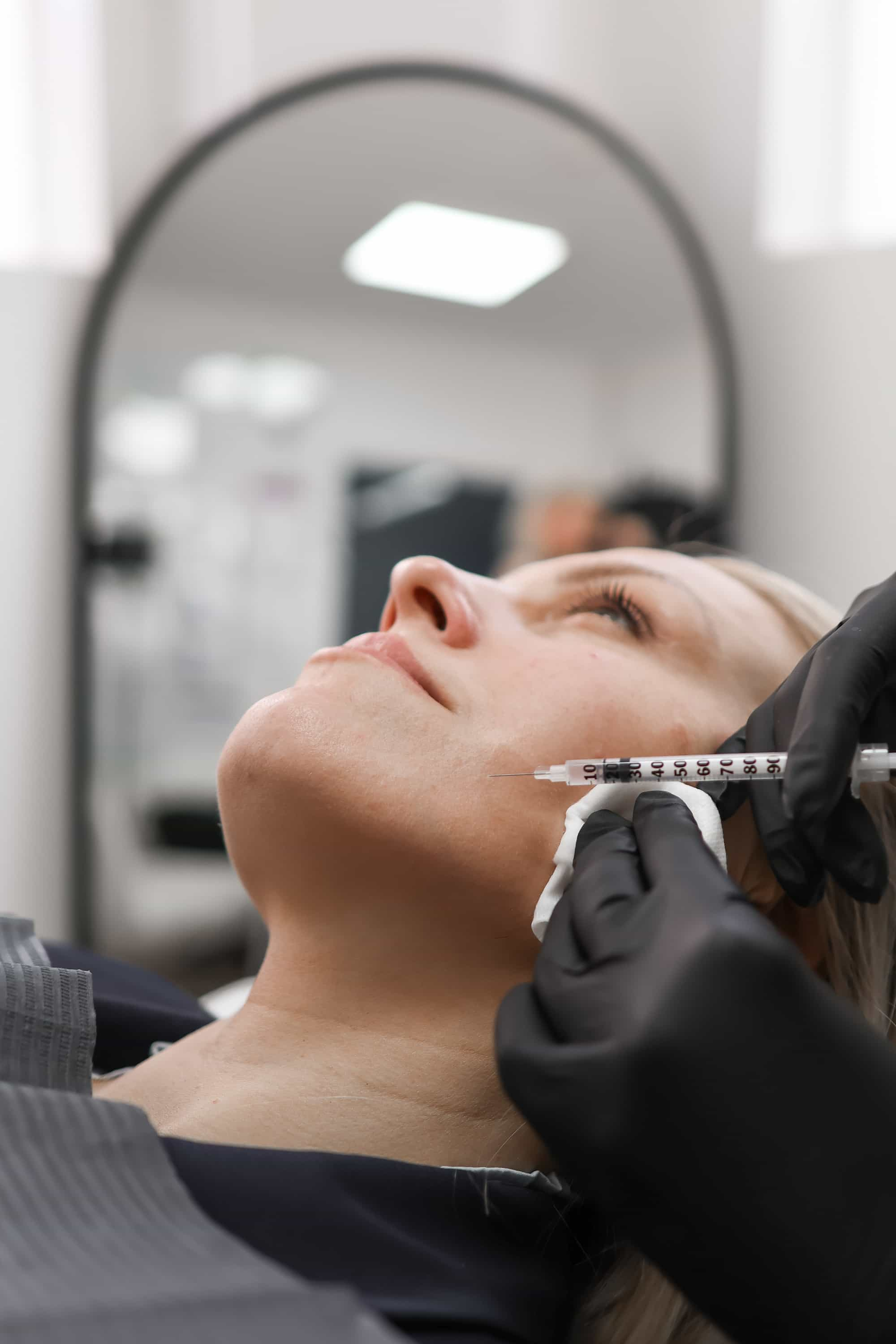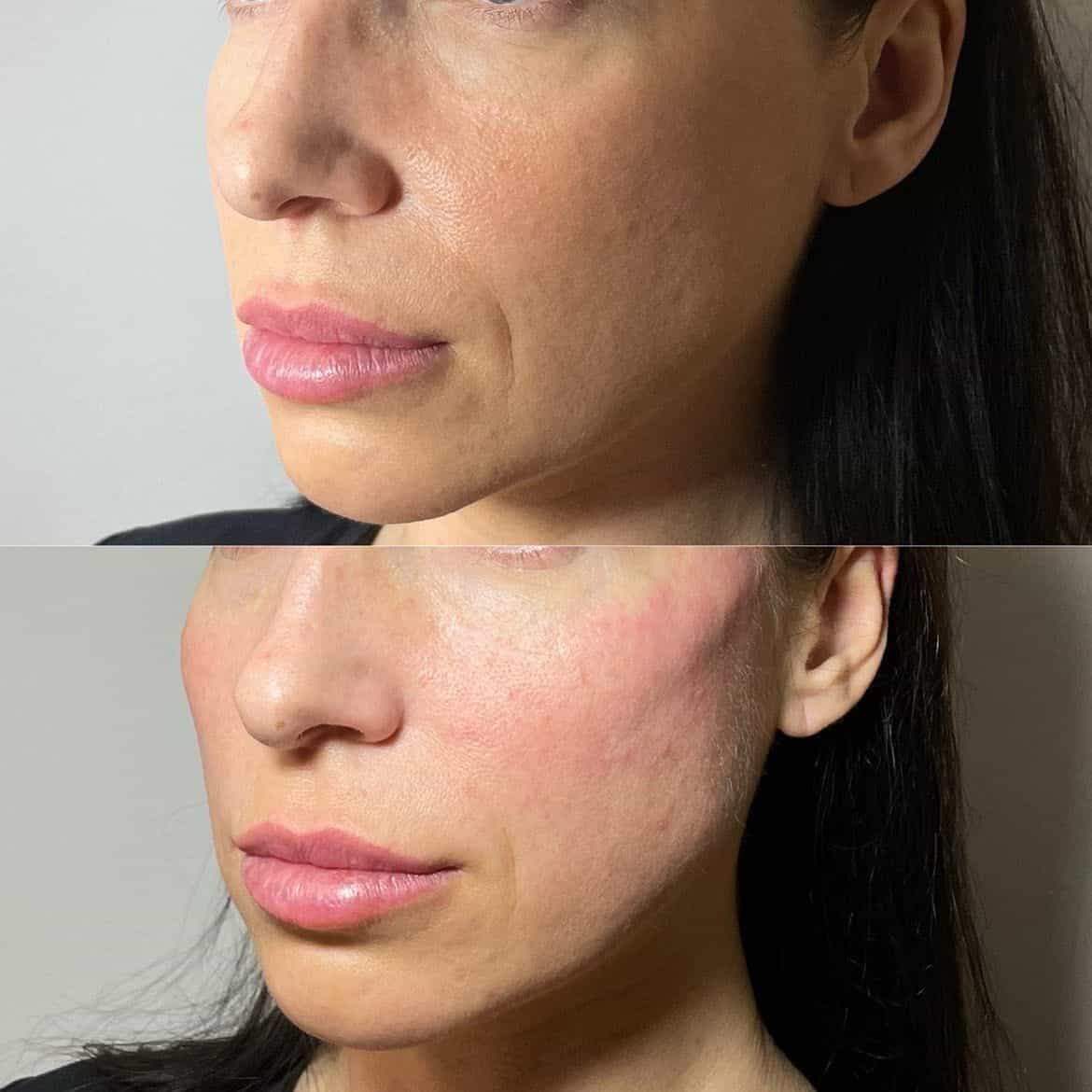Cosmetic Solutions
A downturned smile can impact confidence and make you appear perpetually unhappy, even when you feel perfectly fine. Fortunately, there are now simple and non-invasive treatments available to help correct this aesthetic concern. These solutions can effectively lift the corners of your mouth, revealing a brighter and more youthful smile without resorting to surgery or long recovery times.
Botox
One popular solution for a downturned smile is Botox. This neurotoxin works by temporarily paralyzing the muscles responsible for pulling the corners of the mouth downward. By injecting Botox into specific points around the mouth, a skilled injector can relax these muscles, allowing your natural upward lip movement to shine through. The results are subtle yet noticeable, creating a more balanced and pleasing smile.
Procedure Overview
Another effective option is dermal fillers. These injectable substances are designed to add volume and lift to areas of the face that have lost fullness. Fillers can be strategically placed along the sides of the mouth or at the corners, effectively lifting the downturned edges and restoring a more youthful appearance. The results from dermal fillers can last for several months to a year, depending on the type of filler used.
Benefits and Risks
Both Botox and dermal fillers offer advantages in correcting a downturned smile, each with its own set of considerations. Botox provides a temporary solution that focuses on relaxing the muscles causing the downturn, resulting in a more subtle enhancement. Dermal fillers, on the other hand, offer a longer-lasting solution by adding volume and lifting the corners of the mouth, leading to a more pronounced correction.
It’s important to note that like any cosmetic procedure, there are potential risks associated with both Botox and dermal fillers. These can include bruising, swelling, redness at the injection site, and in rare cases, allergic reactions or asymmetry. Choosing a qualified and experienced injector is crucial to minimize these risks and ensure optimal results.
Before undergoing any treatment, it’s essential to have a thorough consultation with a medical professional to discuss your individual needs, concerns, and expectations. They can help you determine the most suitable option for achieving your desired outcome while considering any underlying medical conditions or medications you may be taking.
Duration of Results
The duration of results for cosmetic solutions like Botox and dermal fillers varies depending on the treatment and individual factors. Botox typically lasts for 3 to 6 months, as the neurotoxin gradually breaks down in the body. Dermal fillers can last from several months to a year or longer, with some newer types offering even more extended results.
The longevity of these treatments also depends on factors like metabolism, lifestyle, and sun exposure. Regular maintenance appointments will be needed to maintain the desired effects over time.
Dermal Fillers
A downturned smile can impact confidence and make you appear perpetually unhappy, even when you feel perfectly fine. Fortunately, there are now simple and non-invasive treatments available to help correct this aesthetic concern. These solutions can effectively lift the corners of your mouth, revealing a brighter and more youthful smile without resorting to surgery or long recovery times.
One popular solution for a downturned smile is Botox. This neurotoxin works by temporarily paralyzing the muscles responsible for pulling the corners of the mouth downward. By injecting Botox into specific points around the mouth, a skilled injector can relax these muscles, allowing your natural upward lip movement to shine through. The results are subtle yet noticeable, creating a more balanced and pleasing smile.
Another effective option is dermal fillers. These injectable substances are designed to add volume and lift to areas of the face that have lost fullness. Fillers can be strategically placed along the sides of the mouth or at the corners, effectively lifting the downturned edges and restoring a more youthful appearance. The results from dermal fillers can last for several months to a year, depending on the type of filler used.
Both Botox and dermal fillers offer advantages in correcting a downturned smile, each with its own set of considerations. Botox provides a temporary solution that focuses on relaxing the muscles causing the downturn, resulting in a more subtle enhancement. Dermal fillers, on the other hand, offer a longer-lasting solution by adding volume and lifting the corners of the mouth, leading to a more pronounced correction.
It’s important to note that like any cosmetic procedure, there are potential risks associated with both Botox and dermal fillers. These can include bruising, swelling, redness at the injection site, and in rare cases, allergic reactions or asymmetry. Choosing a qualified and experienced injector is crucial to minimize these risks and ensure optimal results.
Before undergoing any treatment, it’s essential to have a thorough consultation with a medical professional to discuss your individual needs, concerns, and expectations. They can help you determine the most suitable option for achieving your desired outcome while considering any underlying medical conditions or medications you may be taking.
The duration of results for cosmetic solutions like Botox and dermal fillers varies depending on the treatment and individual factors. Botox typically lasts for 3 to 6 months, as the neurotoxin gradually breaks down in the body. Dermal fillers can last from several months to a year or longer, with some newer types offering even more extended results.
The longevity of these treatments also depends on factors like metabolism, lifestyle, and sun exposure. Regular maintenance appointments will be needed to maintain the desired effects over time.
Procedure Overview
A downturned smile can impact confidence and make you appear perpetually unhappy, even when you feel perfectly fine. Fortunately, there are now simple and non-invasive treatments available to help correct this aesthetic concern. These solutions can effectively lift the corners of your mouth, revealing a brighter and more youthful smile without resorting to surgery or long recovery times.
One popular solution for a downturned smile is Botox. This neurotoxin works by temporarily paralyzing the muscles responsible for pulling the corners of the mouth downward. By injecting Botox into specific points around the mouth, a skilled injector can relax these muscles, allowing your natural upward lip movement to shine through. The results are subtle yet noticeable, creating a more balanced and pleasing smile.
Another effective option is dermal fillers. These injectable substances are designed to add volume and lift to areas of the face that have lost fullness. Fillers can be strategically placed along the sides of the mouth or at the corners, effectively lifting the downturned edges and restoring a more youthful appearance. The results from dermal fillers can last for several months to a year, depending on the type of filler used.
Both Botox and dermal fillers offer advantages in correcting a downturned smile, each with its own set of considerations. Botox provides a temporary solution that focuses on relaxing the muscles causing the downturn, resulting in a more subtle enhancement. Dermal fillers, on the other hand, offer a longer-lasting solution by adding volume and lifting the corners of the mouth, leading to a more pronounced correction.
It’s important to note that like any cosmetic procedure, there are potential risks associated with both Botox and dermal fillers. These can include bruising, swelling, redness at the injection site, and in rare cases, allergic reactions or asymmetry. Choosing a qualified and experienced injector is crucial to minimize these risks and ensure optimal results.
Before undergoing any treatment, it’s essential to have a thorough consultation with a medical professional to discuss your individual needs, concerns, and expectations. They can help you determine the most suitable option for achieving your desired outcome while considering any underlying medical conditions or medications you may be taking.
The duration of results for cosmetic solutions like Botox and dermal fillers varies depending on the treatment and individual factors. Botox typically lasts for 3 to 6 months, as the neurotoxin gradually breaks down in the body. Dermal fillers can last from several months to a year or longer, with some newer types offering even more extended results.
The longevity of these treatments also depends on factors like metabolism, lifestyle, and sun exposure. Regular maintenance appointments will be needed to maintain the desired effects over time.
Types of Fillers Used
Cosmetic solutions aim to enhance one’s appearance by addressing specific concerns, including a downturned smile. A variety of fillers are used in these treatments, each with unique properties suited for different purposes. Hyaluronic acid fillers are among the most popular options. They attract and retain water, providing volume and plumping up areas that have lost fullness. These fillers are also biodegradable, meaning they are gradually broken down by the body over time. Another type of filler is calcium hydroxylapatite, which is a synthetic material that stimulates collagen production. This can lead to longer-lasting results compared to hyaluronic acid fillers. Poly-L-lactic acid (PLLA) is another option that works by stimulating collagen growth over a period of several months.
Results and Longevity
A downturned smile can impact confidence and make you appear perpetually unhappy, even when you feel perfectly fine. Fortunately, there are now simple and non-invasive treatments available to help correct this aesthetic concern. These solutions can effectively lift the corners of your mouth, revealing a brighter and more youthful smile without resorting to surgery or long recovery times.
One popular solution for a downturned smile is Botox. This neurotoxin works by temporarily paralyzing the muscles responsible for pulling the corners of the mouth downward. By injecting Botox into specific points around the mouth, a skilled injector can relax these muscles, allowing your natural upward lip movement to shine through. The results are subtle yet noticeable, creating a more balanced and pleasing smile.
Another effective option is dermal fillers. These injectable substances are designed to add volume and lift to areas of the face that have lost fullness. Fillers can be strategically placed along the sides of the mouth or at the corners, effectively lifting the downturned edges and restoring a more youthful appearance. The results from dermal fillers can last for several months to a year, depending on the type of filler used.
Both Botox and dermal fillers offer advantages in correcting a downturned smile, each with its own set of considerations. Botox provides a temporary solution that focuses on relaxing the muscles causing the downturn, resulting in a more subtle enhancement. Dermal fillers, on the other hand, offer a longer-lasting solution by adding volume and lifting the corners of the mouth, leading to a more pronounced correction.
It’s important to note that like any cosmetic procedure, there are potential risks associated with both Botox and dermal fillers. These can include bruising, swelling, redness at the injection site, and in rare cases, allergic reactions or asymmetry. Choosing a qualified and experienced injector is crucial to minimize these risks and ensure optimal results.
Before undergoing any treatment, it’s essential to have a thorough consultation with a medical professional to discuss your individual needs, concerns, and expectations. They can help you determine the most suitable option for achieving your desired outcome while considering any underlying medical conditions or medications you may be taking.
The duration of results for cosmetic solutions like Botox and dermal fillers varies depending on the treatment and individual factors. Botox typically lasts for 3 to 6 months, as the neurotoxin gradually breaks down in the body. Dermal fillers can last from several months to a year or longer, with some newer types offering even more extended results.
The longevity of these treatments also depends on factors like metabolism, lifestyle, and sun exposure. Regular maintenance appointments will be needed to maintain the desired effects over time.
Lifestyle Modifications
A downturned smile can affect your confidence and make you appear unhappy even when you feel fine. Fortunately, there are now simple, non-invasive treatments that can help correct this aesthetic concern. These solutions effectively lift the corners of your mouth, revealing a brighter and more youthful smile without surgery or lengthy recovery times.
Exercises for Facial Muscles
Lifestyle modifications, combined with targeted exercises, can play a role in enhancing facial expressions and potentially improving the appearance of a downturned smile.
Facial muscles, like any other muscle group, benefit from regular exercise. Specific exercises can target the muscles involved in smiling and help improve their strength and flexibility. For example, regularly practicing smiling exercises, such as raising your eyebrows while smiling or pursing your lips into a “fish face,” can help train the facial muscles involved in lifting the corners of your mouth.
In addition to targeted exercises, maintaining good posture can also positively impact your facial expression. When you have good posture, your head is properly aligned with your spine, which can improve muscle balance and reduce tension in the face.
Specific Exercises for Smile Lift
Lifestyle modifications and specific exercises can contribute to a brighter smile. Practicing facial exercises that target the muscles responsible for lifting the corners of the mouth can help strengthen them over time. These exercises might include raising your eyebrows while smiling, or pursing your lips into a “fish face” position.
Maintaining good posture is also beneficial as proper alignment reduces tension in the face and allows for more natural expression.
Frequency and Duration
A downturned smile can affect your confidence and make you appear unhappy even when you feel fine. Fortunately, there are now simple, non-invasive treatments that can help correct this aesthetic concern. These solutions effectively lift the corners of your mouth, revealing a brighter and more youthful smile without surgery or lengthy recovery times.

Lifestyle modifications, combined with targeted exercises, can play a role in enhancing facial expressions and potentially improving the appearance of a downturned smile.
- Facial muscles, like any other muscle group, benefit from regular exercise. Specific exercises can target the muscles involved in smiling and help improve their strength and flexibility. For example, regularly practicing smiling exercises, such as raising your eyebrows while smiling or pursing your lips into a “fish face,” can help train the facial muscles involved in lifting the corners of your mouth.
- In addition to targeted exercises, maintaining good posture can also positively impact your facial expression. When you have good posture, your head is properly aligned with your spine, which can improve muscle balance and reduce tension in the face.

Lifestyle modifications and specific exercises can contribute to a brighter smile. Practicing facial exercises that target the muscles responsible for lifting the corners of the mouth can help strengthen them over time. These exercises might include raising your eyebrows while smiling, or pursing your lips into a “fish face” position.
Maintaining good posture is also beneficial as proper alignment reduces tension in the face and allows for more natural expression.
Stress Management Techniques
Lifestyle modifications and stress management techniques can play a role in improving overall well-being, which may indirectly affect facial expressions.
Regular exercise can boost mood and reduce stress, potentially leading to a more relaxed and happier appearance. Practicing mindfulness or meditation can help manage stress levels and promote a sense of calm, which can also positively impact facial expressions. A healthy diet rich in fruits, vegetables, and whole grains provides essential nutrients that contribute to overall health and well-being, including skin elasticity and muscle tone.
Getting enough sleep is crucial for both physical and mental health. When you’re well-rested, your face appears more refreshed and your muscles are less prone to tension.
Stress can manifest physically, causing tension in the facial muscles, which may contribute to a downturned smile. Incorporating stress management techniques into your routine can help alleviate this tension.
Discover innovative treatments for downturned smiles at It’s Me & You Clinic.
- Sculptra Surrey – Collagen Stimulation Therapy Near Shepperton, Surrey - November 3, 2025
- Sculptra Surrey – Collagen Stimulation Therapy Near Dunsfold, Surrey - November 1, 2025
- Retinol Peel Near Tatsfield, Surrey - October 30, 2025
